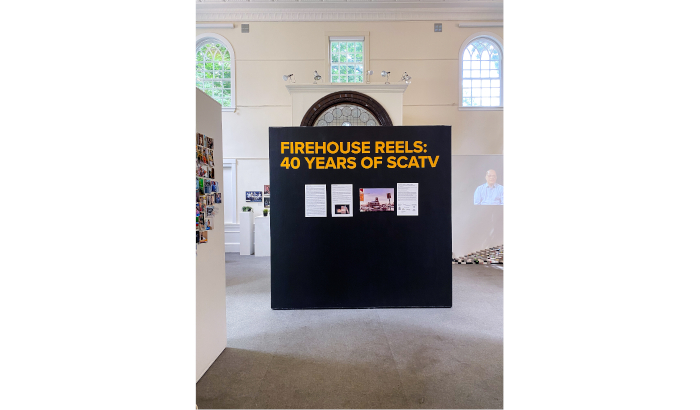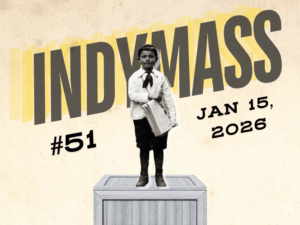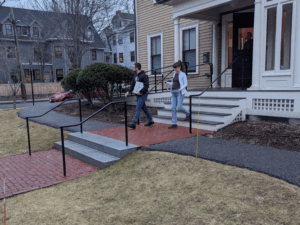Exhibit highlights the once-controversial practice of cities supporting free speech
SCAT was born in controversy.
When a utility comes in to do business in a city, there’s the expectation that the company will give back to the community that’s letting them set up lines over the streets. In Somerville, the expectation was that Warner Amex would use its cable to support local producers making programs that they would broadcast. And for a time, those were high expectations.
In 1974, Dead Air Live started production in the Warner Amex studios. No one got along, and eventually the Warner Amex staff called police, saying the producers complaining about the cable company were trespassing. An arrest was transmitted to Somerville’s cable users, live.
City officials smoothed over relations, but the artists of Somerville kept pushing boundaries. Warner Amex and the Somerville Producers Group who produced Dead Air Live were automatically enemies, and sometimes the Somerville artists were not overly grateful for the broken equipment the cable company provided. There were a number of shows specifically about the service, or lack thereof, provided to Somerville’s artistic community.
In 1982, the city started negotiations to renew the contract with the cable company, and it became obvious the problem wasn’t going away. The idea was to set up studios for local producers that the cable company couldn’t control. A percentage of profits from all the cable sales in the community would be set aside for a nonprofit to manage those studios and to ensure access to cable television—following the model created by public-access television pioneers in New York City and elsewhere in the US in the 1960s. The rabble-rousing producers would have their very own home, would manage themselves and put what they wanted on air.
They called it Somerville Community Access Television, or SCAT, for short.
It was the first cable access station in Massachusetts. It remains home to Dead Air Live, the longest continuously-produced cable access show in the United States.
That story, “Firehouse Reels: 40 Years of SCATV,” is on display at the Somerville Museum, a Federal Revival building created in the 1920s to house the growing collection of the Somerville Historical Society. Where the museum wasn’t built with the intention of showing off videos of experimental art and politics, it has become a home to historians and artists in the city:
The exhibit starts with the 1974 tape—it is quite literally a tape—of the Somerville High School hockey game that became the first local content played on cable. After the Somerville Producers Group was formed—and Charlie Kelley was arrested—the city renovated the firehouse in Union Square to create SCATV, the more polite abbreviation of Somerville Community Access TV.
The revolutionary part of all of this was that anything could be a live show. SCATV was the site of the first deaf teleconference broadcast nationwide. A network connected Somerville schools and CCTV in Cambridge, allowing shared programming between the two stations even before they had internet connections.
The exhibit creates a “room” for each decade. The 80s has numerous founding documents and 3/4 inch tapes. By the 2010s, everything is digital, and studio lights highlight a green screen where even the background is virtual. In between are stops through the history of SCATV, including a state representative storming the building, angry his corruption trial transcript was read before election night. The show concludes with a wall of “family photos” showing producers at the station and their guests since the start of the pandemic to today.
While visiting the Somerville Museum, also check out “Space Invader: An Immigrant Experience Through Immersive Art”—a companion exhibit to “Firehouse Reels” curated by Rook Murao. Upcoming shows include “Sanctuary City” and “Waterlines: Stories of Urban Ebb and Flow.”
Photo Credit: “Firehouse Reels” exhibit at the Somerville Museum, June 2022. Photo by Jason Pramas. Copyright 2022 Jason Pramas.
Kat Powers is the executive director of the Somerville Media Center (including SCATV).








